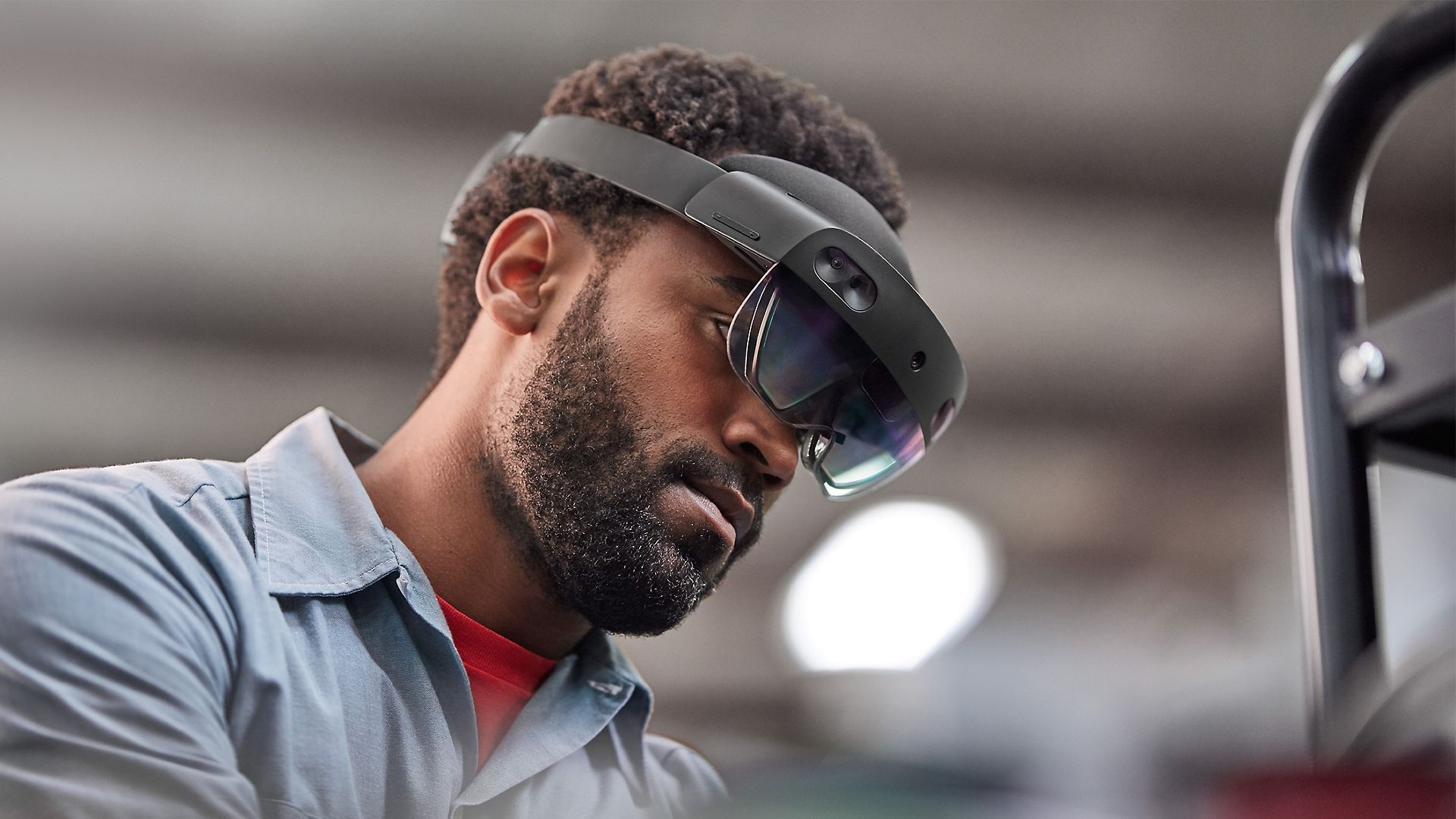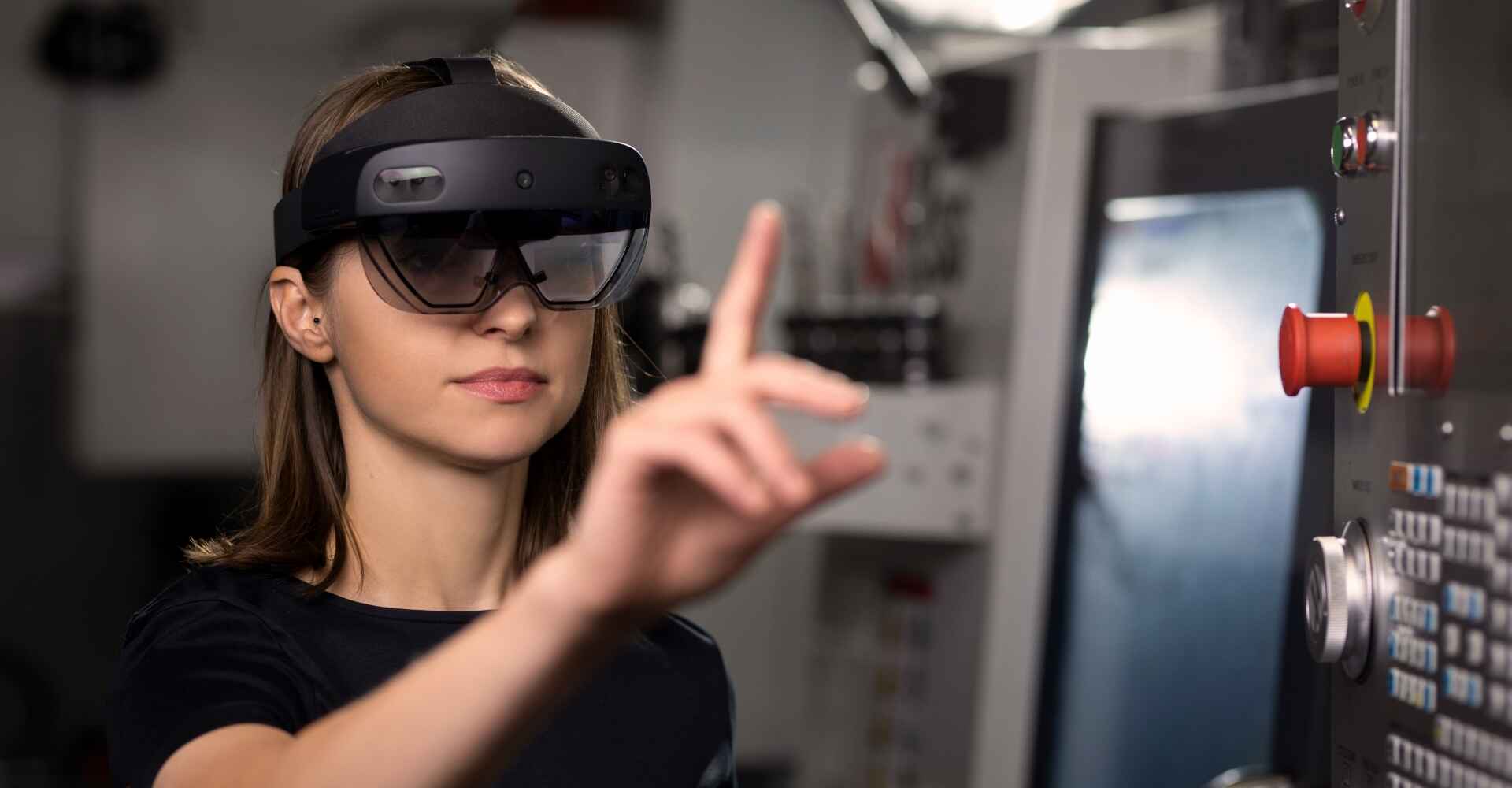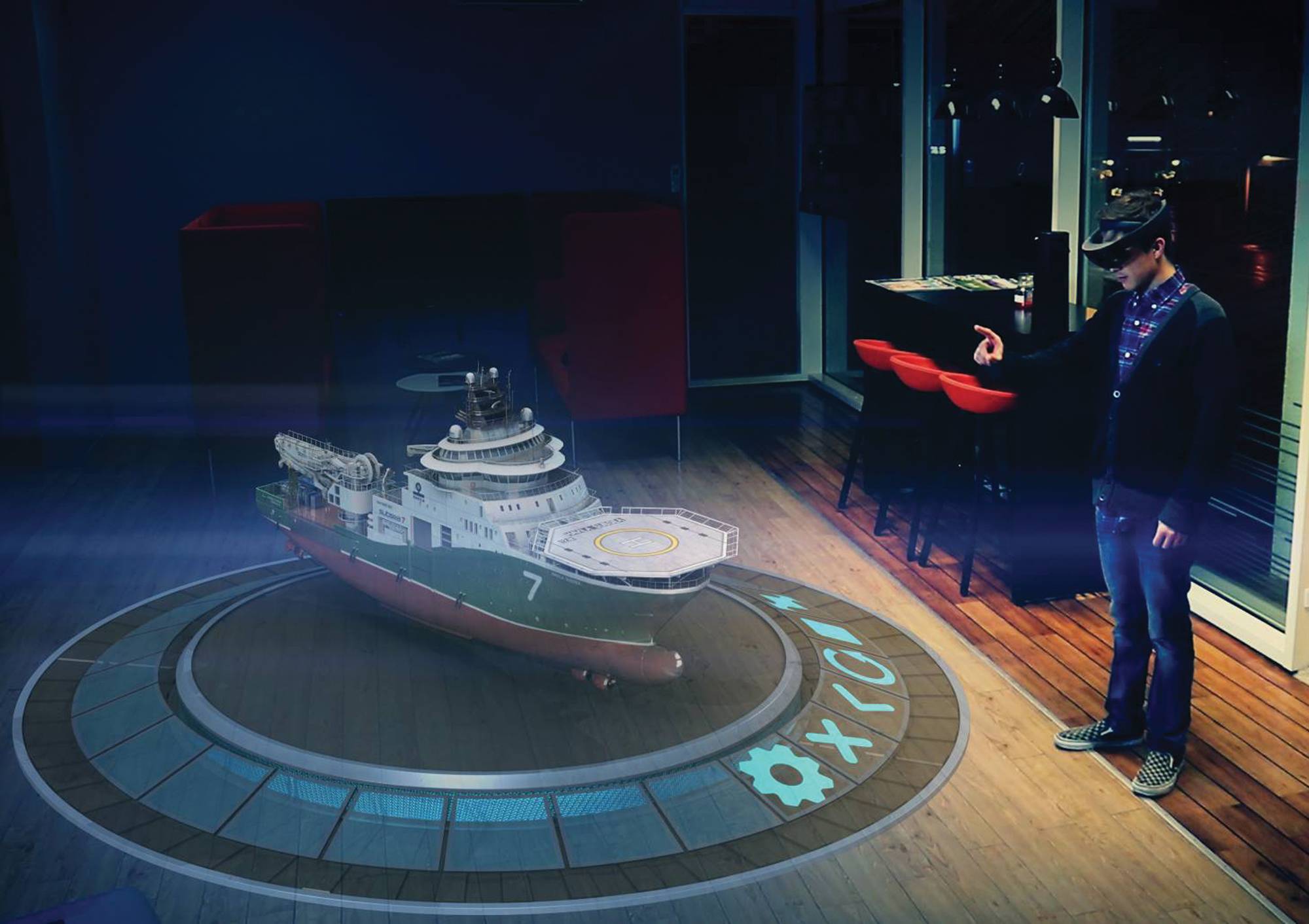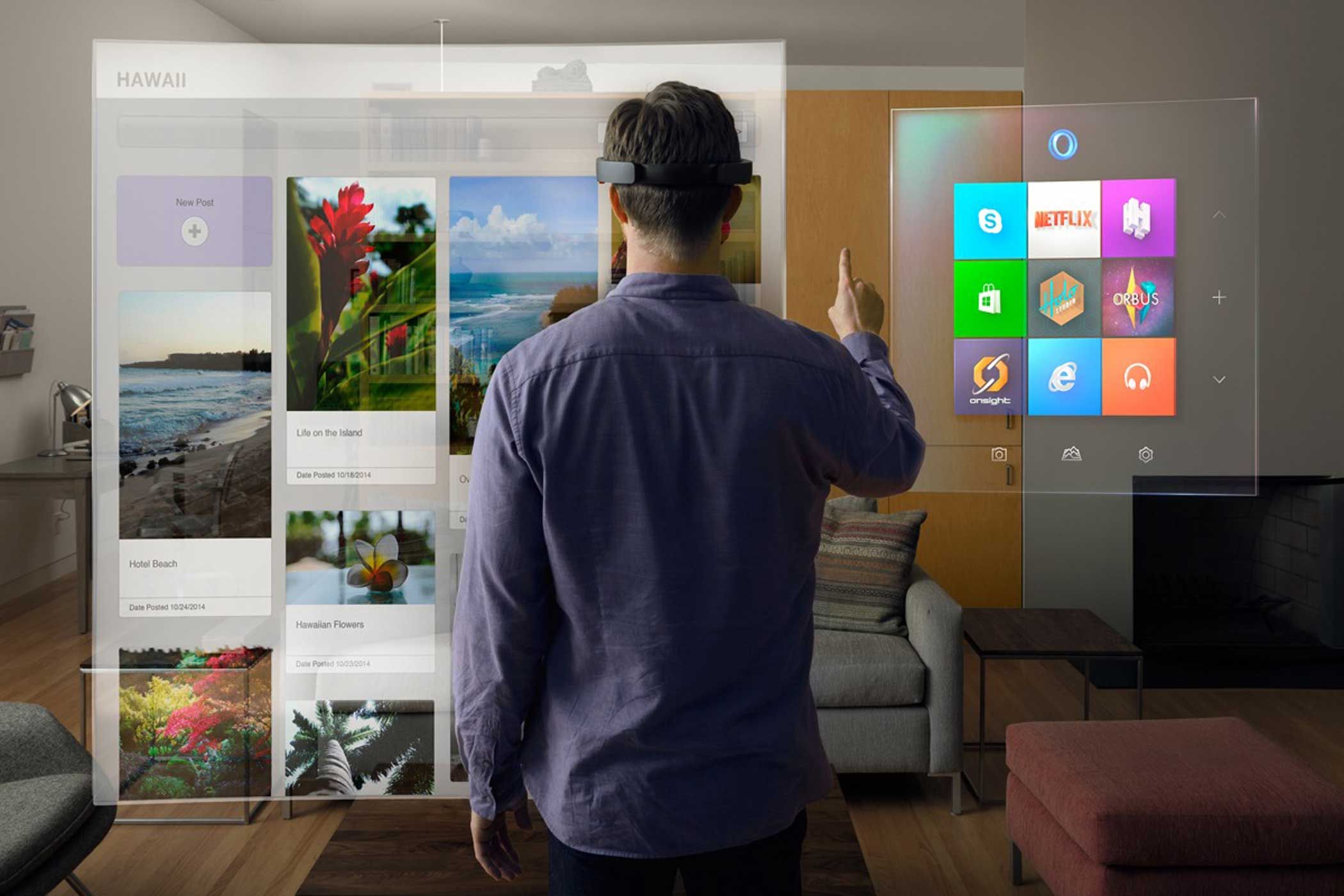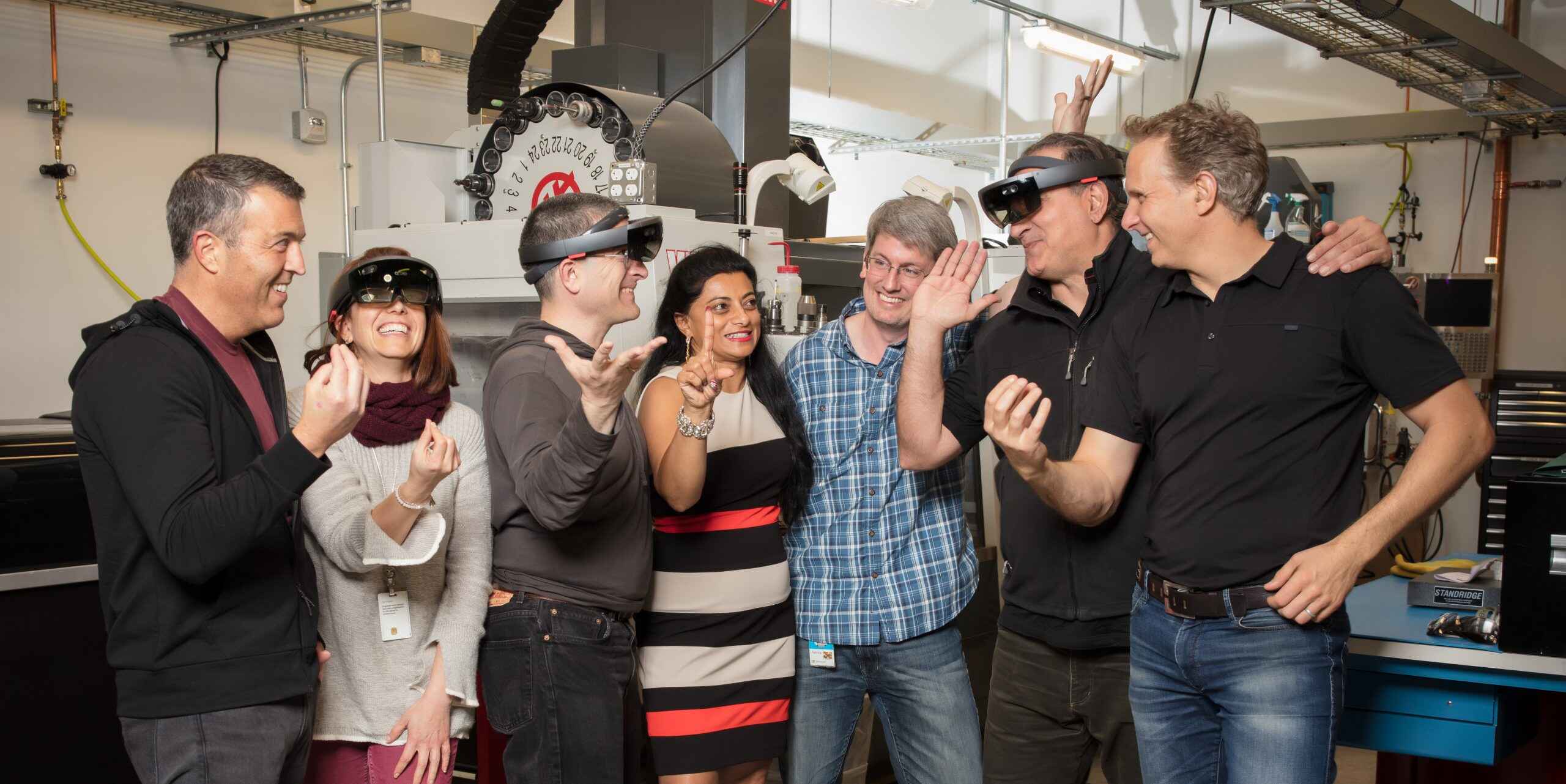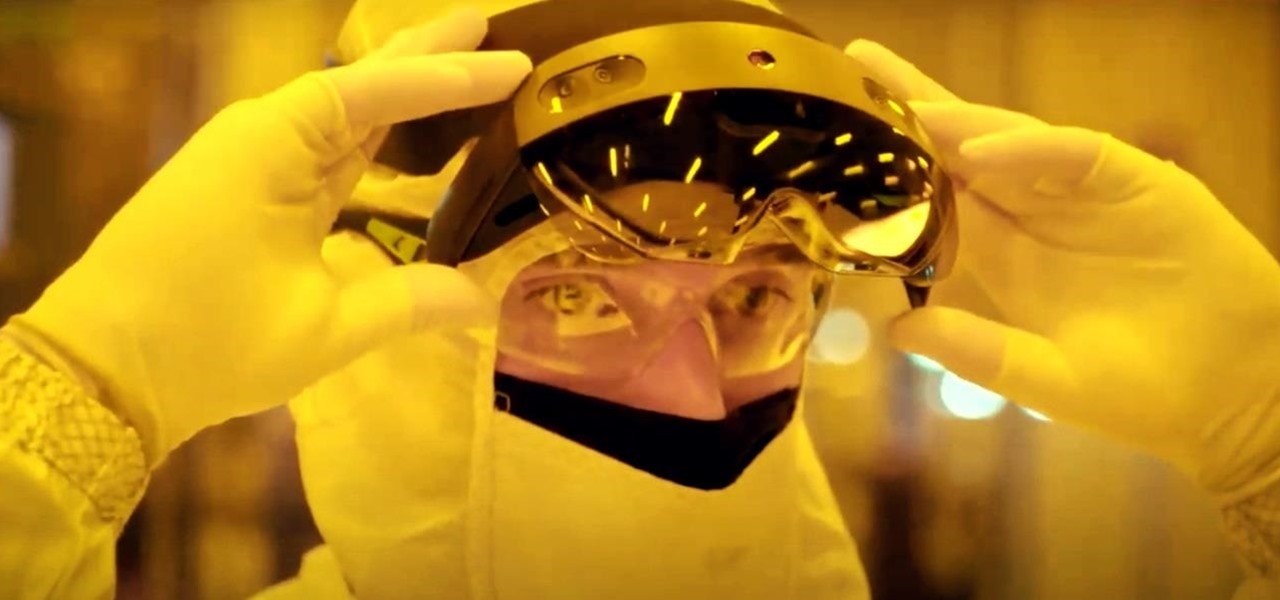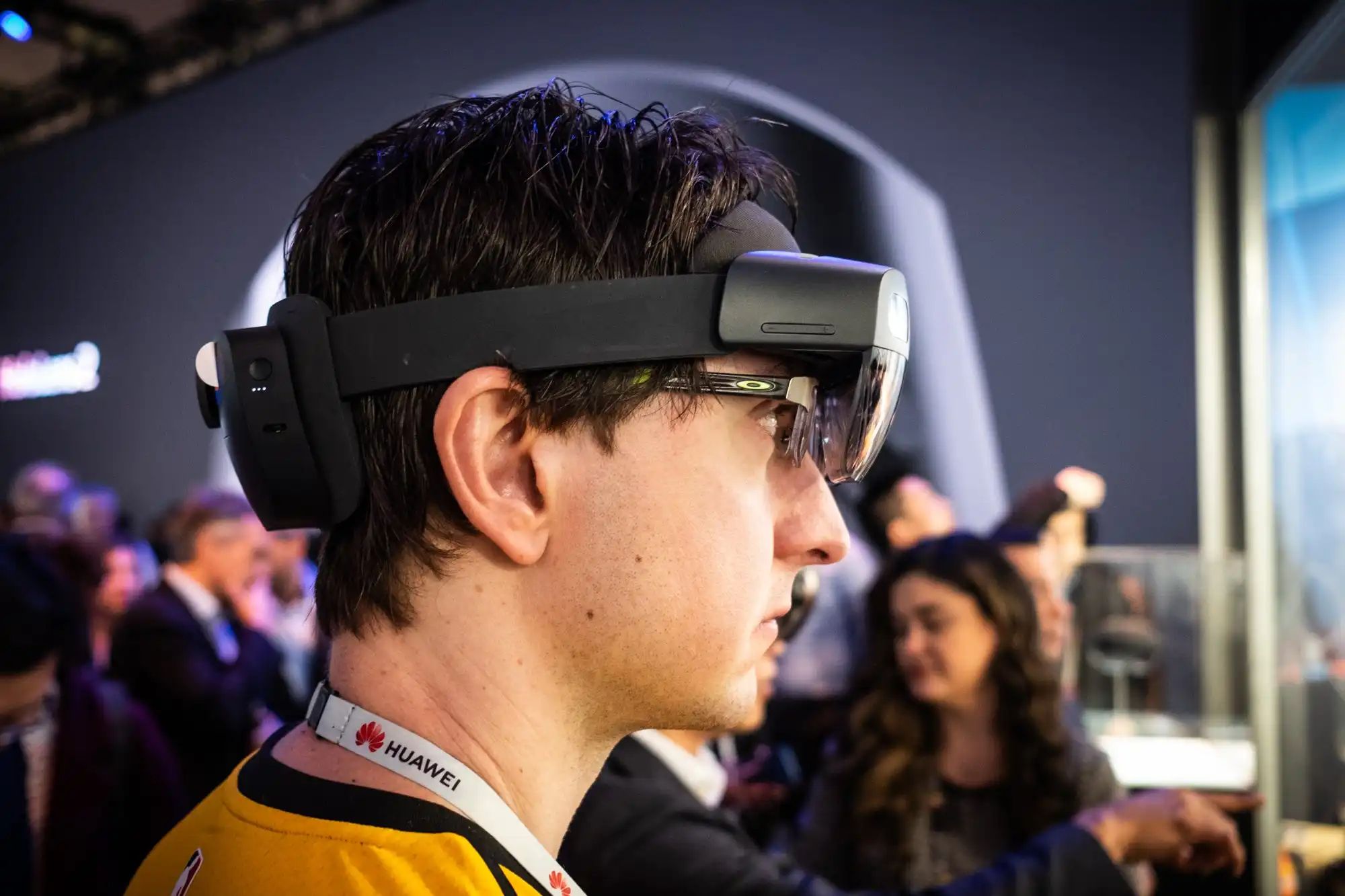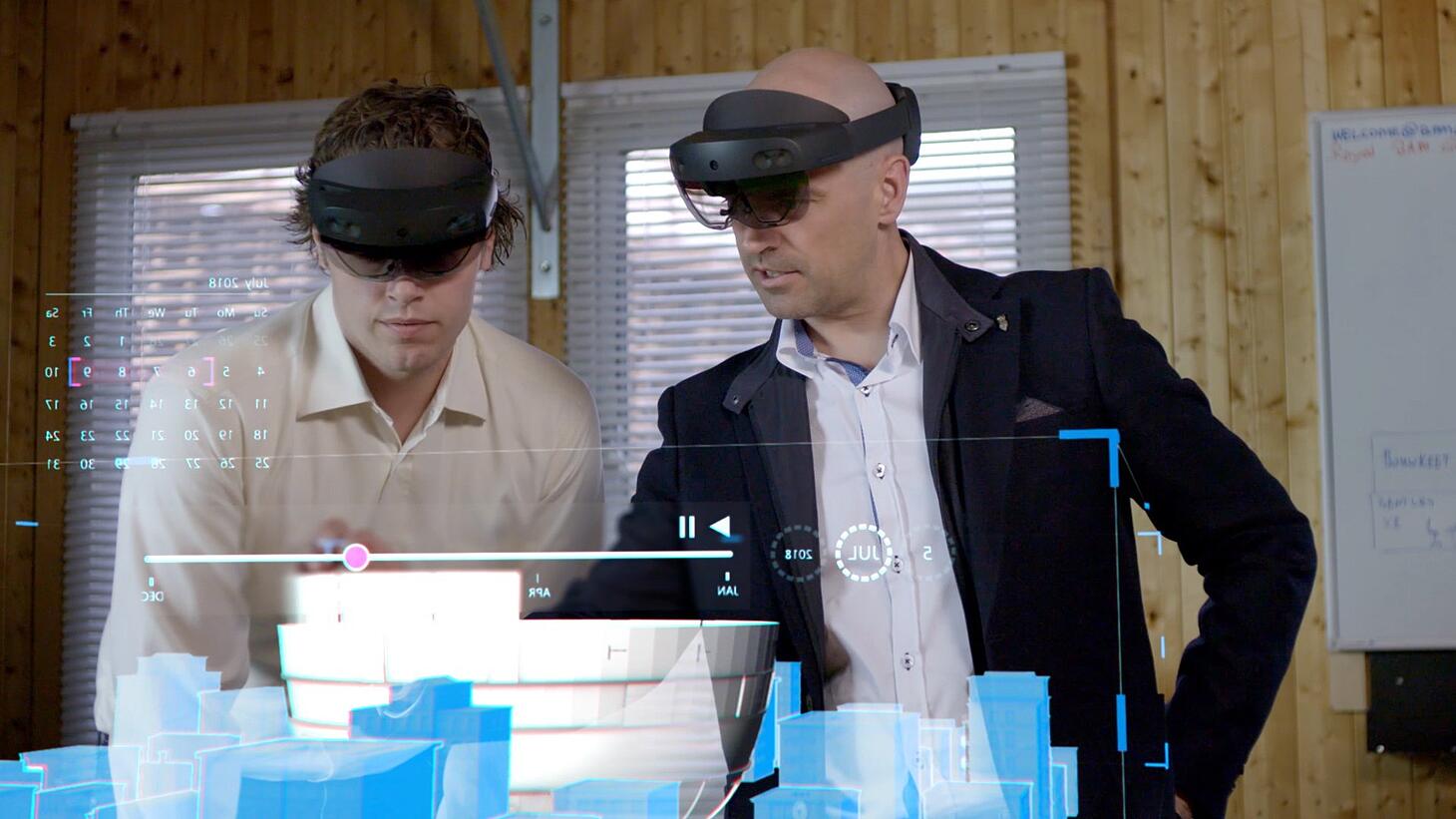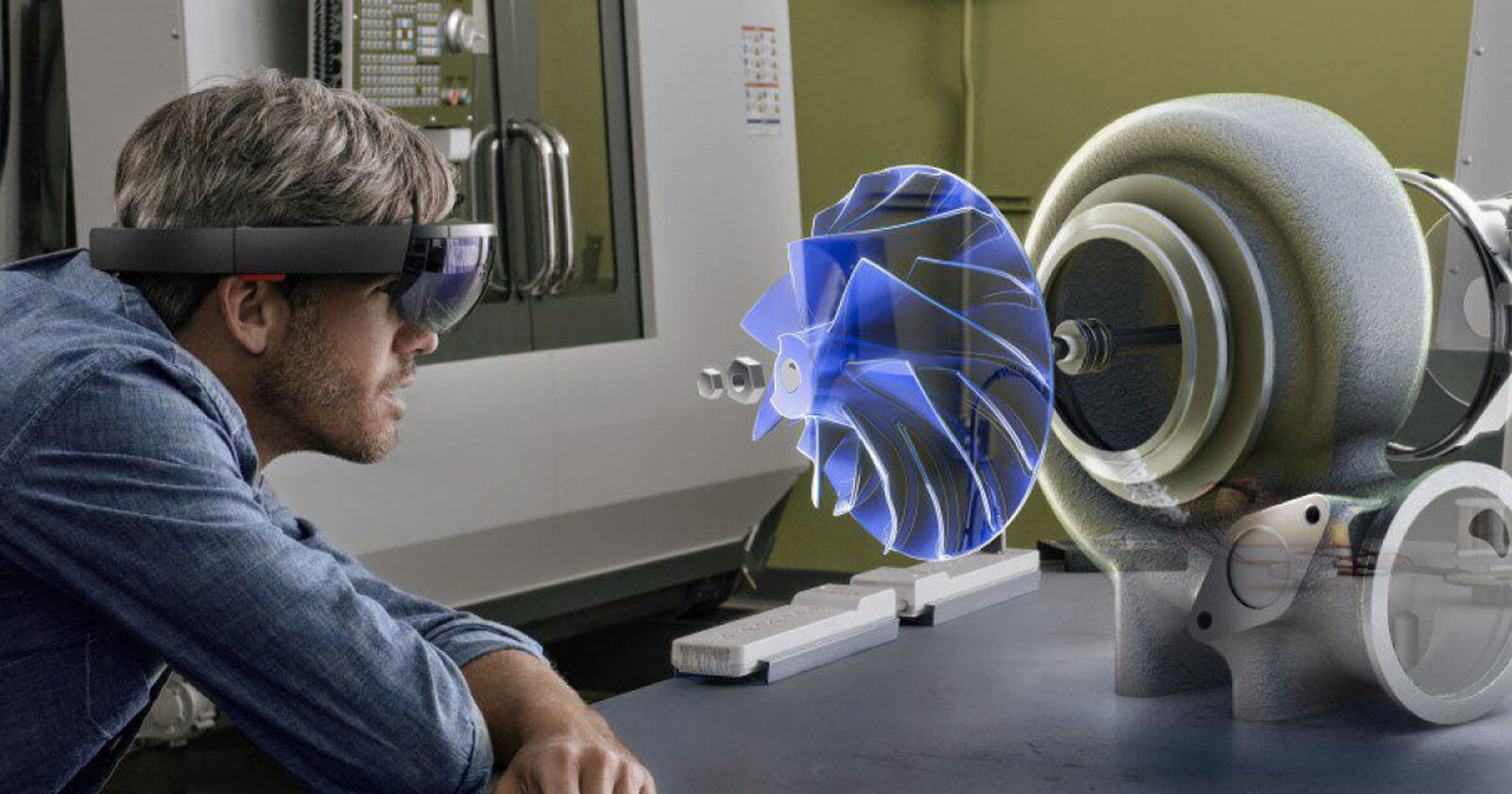Introduction
Welcome to the exciting world of mixed reality! The HoloLens, developed by Microsoft, is a cutting-edge device that blends the physical and digital realms, allowing users to interact with holographic content in their real-world environment. As a HoloLens partner, you have the opportunity to be at the forefront of this revolutionary technology and unlock a whole new world of possibilities.
By becoming a HoloLens partner, you gain access to a range of exclusive benefits and resources that can help you create and market your own HoloLens applications. Whether you are a developer, a designer, or a business looking to leverage mixed reality technology, partnering with HoloLens provides a unique opportunity for growth and innovation.
In this article, we will explore the benefits of becoming a HoloLens partner, the application process, the partner program requirements, and the steps involved in building, testing, and marketing your HoloLens app. Whether you are an established software company or an individual with a brilliant idea, this guide will provide you with the necessary information to get started on your journey as a HoloLens partner.
So, if you’re ready to delve into the realm of mixed reality and create immersive experiences for HoloLens users, let’s explore how you can become a HoloLens partner and bring your ideas to life!
What is HoloLens?
HoloLens is a revolutionary mixed reality device developed by Microsoft. Unlike virtual reality (VR) headsets that completely immerse users in a digital environment, HoloLens blends virtual content with the real world, allowing users to interact with holographic projections in their physical surroundings.
Using advanced sensors, cameras, and spatial sound, HoloLens detects the user’s movements and real-time environment to place and anchor holograms in the user’s field of view. This creates a seamless and interactive mixed reality experience, where virtual objects can be manipulated, explored, and integrated into the user’s daily life.
By wearing the HoloLens headset, users can see and interact with holographic content such as 3D models, applications, games, and more. They can place virtual objects on real surfaces, walk around them, and even collaborate with others wearing HoloLens devices in the same physical space.
The potential applications of HoloLens span various industries including architecture, engineering, medical, entertainment, and education. From training simulations to interactive visualizations, HoloLens enables users to enhance their understanding and engagement with digital content in ways that were previously unimaginable.
One of the key strengths of HoloLens is its ability to provide a hands-free and untethered experience. Unlike virtual reality headsets that require connection to a computer or gaming console, HoloLens is a standalone device that allows users to move freely and untethered, making it ideal for a wide range of applications and environments.
With its cutting-edge technology and incredible potential, HoloLens has gained recognition as one of the leading devices in the mixed reality field. As a HoloLens partner, you have the opportunity to embrace this transformative technology and contribute to shaping the future of mixed reality experiences.
Benefits of Becoming a HoloLens Partner
Becoming a HoloLens partner opens up a world of opportunities and benefits for individuals, developers, and businesses alike. From access to exclusive resources to the potential for growth and collaboration, here are some of the key benefits of joining the HoloLens partner program:
- Access to HoloLens Development Kits: As a partner, you gain access to HoloLens Development Kits, which include the hardware and software needed to build and test applications for the HoloLens platform. This allows you to start experimenting and developing innovative mixed reality experiences right away.
- Developer Support and Documentation: Microsoft provides comprehensive developer support and documentation to help you navigate the HoloLens platform. From technical guidance to sample code and tutorials, you will have the resources needed to bring your ideas to life and overcome any development challenges.
- Marketplace Visibility: By being part of the HoloLens partner program, your applications will be featured in the Microsoft Store for HoloLens. This gives you increased visibility and the opportunity to reach a global audience of HoloLens users who are actively seeking new and innovative experiences.
- Collaboration and Networking: As a HoloLens partner, you become part of a vibrant community of like-minded individuals, developers, and businesses. This provides opportunities for collaboration, knowledge sharing, and networking, allowing you to learn from others and potentially form partnerships that can drive your success in the mixed reality space.
- Marketing and Promotion: Microsoft offers various marketing and promotion opportunities for HoloLens partners. From featured app placements to joint marketing campaigns, you can benefit from Microsoft’s marketing muscle to increase the visibility and downloads of your HoloLens applications.
- Technical Support and Updates: Microsoft continuously updates the HoloLens platform with new features and improvements. As a partner, you will receive access to these updates, ensuring that your applications are compatible with the latest capabilities of the HoloLens and providing an opportunity to leverage new functionalities to enhance your mixed reality experiences.
- Revenue Opportunities: By developing and publishing applications for the HoloLens platform, you have the potential to generate revenue through app sales, in-app purchases, and subscriptions. This opens up new revenue streams and business opportunities for developers and businesses looking to monetize their HoloLens applications.
Overall, becoming a HoloLens partner not only grants you access to the technology and resources needed to create immersive mixed reality experiences but also provides you with a supportive community, marketing exposure, and the potential to generate revenue. It’s an invitation to be at the forefront of the mixed reality revolution and shape the future of this exciting technology.
How to Apply to Become a HoloLens Partner
If you are eager to become a HoloLens partner and unlock the full potential of mixed reality development, here are the steps to apply:
- Prepare Your Application: Before you apply, make sure you have a clear understanding of your project or idea for a HoloLens application. Outline the key features, target audience, and potential market impact to showcase the value of your project.
- Visit the HoloLens Partner Program Website: Go to the official HoloLens partner program website to begin the application process. This website provides detailed information about the program, requirements, and benefits.
- Create a Microsoft Partner Account: If you don’t already have one, you will need to create a Microsoft Partner Center account. This account will be used for managing your partnership with Microsoft and accessing the resources and tools provided to HoloLens partners.
- Submit Your Application: Complete the application form provided on the HoloLens partner program website. Provide accurate and detailed information about your project, its goals, and your capabilities. Include any relevant portfolio or previous experiences to strengthen your application.
- Wait for Review and Approval: Once you have submitted your application, it will be reviewed by the Microsoft team. The review process may take some time, so be patient. Microsoft will evaluate your project’s feasibility, market potential, and alignment with the HoloLens ecosystem.
- Receive Notification of Approval: If your application is approved, you will receive a notification from Microsoft stating that you have been accepted as a HoloLens partner. This email will provide further instructions on how to proceed and access the partner resources.
- Access Partner Resources: Follow the provided instructions to gain access to the HoloLens Development Kits, documentation, and other resources available to HoloLens partners. These resources will be crucial for the development, testing, and deployment of your HoloLens application.
Remember, the application process is competitive, and Microsoft receives numerous applications from talented individuals and businesses. To increase your chances of being accepted as a HoloLens partner, ensure your application demonstrates a unique and innovative approach, a clear market potential, and the capability to deliver high-quality mixed reality experiences.
So, if you are passionate about mixed reality and have a compelling project or idea, follow these steps to apply and take the first exciting step toward becoming a HoloLens partner.
Partner Program Requirements
While the HoloLens partner program offers tremendous opportunities, it also requires partners to meet certain requirements. These requirements are put in place to ensure the delivery of high-quality mixed reality experiences and maintain the integrity of the HoloLens ecosystem. Here are the key partner program requirements:
- Development Expertise: Partners are expected to demonstrate strong development skills and expertise in building HoloLens applications. This includes proficiency in programming languages such as C#, familiarity with the Unity game engine, and a solid understanding of augmented reality and mixed reality concepts.
- Quality and User Experience: Partners are expected to deliver applications that meet high-quality standards and provide exceptional user experiences. This includes ensuring stability, smooth performance, and intuitive interactions with holographic content.
- Compliance with Microsoft Guidelines: Partners must adhere to Microsoft’s guidelines and policies for app development, content creation, and ethical use of mixed reality technology. This includes following Microsoft’s code of conduct, intellectual property rights, and avoiding any offensive or inappropriate content.
- Compatibility and Optimizations: HoloLens partners are responsible for optimizing their applications to run efficiently on the HoloLens device. This includes considering performance optimizations, battery consumption, and leveraging the unique capabilities of the HoloLens, such as spatial mapping and gesture recognition.
- Localization and Global Market Reach: Partners are encouraged to make their applications available to a global audience by supporting multiple languages and considering cultural preferences and localization practices. This helps to expand the reach and impact of the HoloLens ecosystem.
- Security and Privacy: Partners must prioritize the security and privacy of their applications and user data. This includes implementing appropriate security measures, protecting personal information, and following industry best practices regarding data privacy and compliance.
- Continuous Support and Updates: HoloLens partners are expected to provide ongoing support and updates for their applications. This ensures that users have access to the latest features, bug fixes, and performance improvements, keeping the applications up-to-date with the evolving HoloLens platform.
Meeting these requirements is essential for a successful partnership with HoloLens. It demonstrates your commitment to delivering exceptional mixed reality experiences and contributes to the overall quality and reputation of the HoloLens ecosystem.
Remember, as a partner, you are joining a community of developers and businesses who are passionate about mixed reality. It is crucial to engage in collaboration and knowledge-sharing opportunities within the community to stay up-to-date with the latest best practices, industry trends, and advancements in mixed reality technology.
By fulfilling these requirements and actively participating in the HoloLens partner program, you will position yourself as a trusted and skilled contributor to the exciting world of mixed reality experiences.
Building a HoloLens App
Building a HoloLens app is an exciting and creative process that allows you to bring your ideas to life in the realm of mixed reality. Here are the key steps involved in building a HoloLens app:
- Brainstorm and Design: Start by brainstorming and conceptualizing your app idea. Define the purpose, features, and target audience for your app. Consider how your app can leverage the unique capabilities of the HoloLens, such as spatial mapping, gesture recognition, and holographic interactions.
- Choose Development Tools: HoloLens app development primarily involves using the Unity game engine and the HoloLens development kits. Familiarize yourself with Unity and the HoloLens APIs to leverage the built-in features and functionalities specifically designed for creating mixed reality experiences.
- Develop and Test: Use your chosen development tools to start building your app. Write code, create 3D assets, and design user interfaces. Test your app frequently on an actual HoloLens device to ensure that it delivers the desired user experience and functionality.
- Implement Interaction and Gesture Control: HoloLens apps rely heavily on user interactions and gestures for navigation and control. Incorporate appropriate gestures, such as air tap, gaze, and voice commands, to provide intuitive and immersive interactions within your app. Test the interactions thoroughly to ensure accuracy and responsiveness.
- Optimize Performance: Performance optimization is crucial for delivering a smooth and responsive HoloLens app. Optimize rendering, minimize battery consumption, and ensure efficient use of system resources. Consider the limitations of the HoloLens hardware and optimize your app accordingly.
- Integrate Spatial Mapping: Spatial mapping allows your app to understand the real-world environment and anchor holograms to physical surfaces. Leverage the spatial mapping capabilities of the HoloLens to create a seamless and immersive mixed reality experience.
- Iterate and Refine: Continuously iterate and refine your app based on user feedback and testing. Incorporate improvements, fix bugs, and enhance the user interface to deliver a polished and engaging experience. Regular updates and improvements will help keep your app relevant and valuable to users.
Remember, building a HoloLens app requires a combination of technical skills, creativity, and an understanding of user experience design in the mixed reality space. Embrace the unique opportunities and challenges that come with developing for HoloLens, and be prepared to iterate and learn throughout the development process.
Furthermore, Microsoft provides extensive documentation, tutorials, and sample code to help you get started with HoloLens app development. Leverage these resources to accelerate your learning and tap into the collective knowledge of the HoloLens developer community.
By following these steps and investing time and effort into building a high-quality HoloLens app, you can create an immersive and engaging mixed reality experience that will captivate users and contribute to the growing ecosystem of HoloLens applications.
Testing and Certification Process
Once you have developed your HoloLens app, it is essential to undergo thorough testing and ensure that it meets the quality standards set by Microsoft. The testing and certification process involves several steps to ensure that your app functions as intended and provides a seamless experience for users. Here’s an overview of the testing and certification process:
- Functional Testing: Test all the features and functionalities of your app to ensure they work as expected. Verify that user interactions, hologram placement, and app behavior align with your design and intended user experience.
- Performance Testing: Evaluate the performance of your app on the HoloLens device. Test for smooth frame rates, responsiveness to user actions, and efficient utilization of system resources. Optimize your app’s performance to deliver a fluid and enjoyable experience.
- Usability Testing: Conduct usability testing with a diverse group of users to gather feedback on the app’s user interface, ease of navigation, and overall user experience. Incorporate user feedback to make necessary improvements and enhancements.
- Accessibility Testing: Ensure that your app is accessible to a wide range of users. Test for compatibility with assistive technologies, provide alternative text for non-text elements, and adhere to accessibility guidelines to ensure inclusivity and usability for all users.
- Localization Testing: If your app supports multiple languages, perform localization testing to verify the accuracy and appropriateness of the translated content. Ensure that the app’s user interface, text, and cultural references are suitable for different locales and customs.
- Security and Privacy Testing: Validate the security and privacy measures implemented in your app. Test for vulnerabilities, data encryption, and appropriate handling of user information. Establish measures to protect user privacy and comply with relevant regulations and industry standards.
- Submission for Certification: Once you have completed testing and addressed any issues or errors, submit your app for certification through the Microsoft Partner Center. Provide all necessary documentation and information required for the certification process.
- Review and Approval: Microsoft will review your app to ensure that it meets the certification requirements. This review process typically evaluates aspects such as functionality, performance, user experience, security, and adherence to Microsoft’s guidelines and policies.
- Certification Feedback and Iteration: If any issues are identified during the review process, you will receive feedback from Microsoft. Address the identified issues, make the necessary improvements, and resubmit your app for further review and certification.
It is important to note that the testing and certification process may take time and require iteration to meet the necessary standards. Be prepared to make iterative adjustments based on the feedback and requirements provided by Microsoft.
By successfully completing the testing and certification process, you can ensure that your app meets the quality standards and guidelines defined by Microsoft. This will help provide users with a reliable and enjoyable mixed reality experience and contribute to the overall success and growth of the HoloLens platform.
Marketing and Selling Your HoloLens App
After developing and testing your HoloLens app, the next step is to effectively market and sell it to reach your target audience. By implementing a solid marketing strategy, you can increase the visibility and downloads of your app. Here are some key steps to market and sell your HoloLens app:
- Create Compelling App Descriptions and Screenshots: Craft an attention-grabbing app description that highlights the unique features and benefits of your app. Use engaging language and compelling visuals, including screenshots and videos, to effectively showcase your app to potential users.
- Optimize Your App Store Listing: Utilize relevant keywords in your app’s title, description, and metadata to improve its visibility in app store search results. Research and identify keywords that are specific to your app’s features and target audience.
- Utilize Social Media and Online Channels: Leverage various social media platforms and online channels to promote your HoloLens app. Create engaging content, such as tutorials, behind-the-scenes videos, and user testimonials, to generate interest and excitement among potential users.
- App Reviews and Influencer Collaborations: Encourage users to leave positive reviews and ratings for your app in app stores. Additionally, collaborate with influencers and industry experts who are passionate about mixed reality to review and promote your app to their followers.
- Engage with Your Target Audience: Interact and engage with your target audience through community forums, social media groups, and online events. Respond to user feedback and inquiries promptly, and provide regular updates on app improvements and new features.
- Offer Promotions and Discounts: Implement limited-time promotions and discounts to attract customers and encourage app downloads. Consider partnering with other developers or businesses to create bundle deals or cross-promotions to expand your app’s reach.
- Continued App Support and Updates: Regularly release updates for your app to improve functionality, add new features, and address any user-reported issues. Promote these updates through app store listings, social media, and email newsletters to keep users engaged and interested.
- Collect User Feedback and Analyze Data: Gather feedback from users to understand their needs and preferences. Analyze user data, such as demographics and usage patterns, to refine your marketing strategy and tailor your app’s features and content to better meet market demands.
- Consider Paid Advertising: Explore paid advertising options, such as app store ads, Google Ads, or social media ads, to reach a larger audience. Develop targeted campaigns to maximize the visibility and potential downloads of your HoloLens app.
Remember, effective marketing and selling of your HoloLens app require a combination of strategic planning, engaging content creation, and active engagement with your target audience. Continuously adapt and refine your marketing approach based on user feedback, market trends, and the evolving landscape of mixed reality technology.
By implementing these marketing strategies, you can increase awareness, drive downloads, and ultimately maximize the success of your HoloLens app in the increasingly competitive mixed reality market.
Conclusion
Embarking on the journey of becoming a HoloLens partner opens up exciting opportunities in the realm of mixed reality. By joining the HoloLens partner program, you gain access to valuable resources, support, and a vibrant community of developers and businesses passionate about creating immersive experiences. Throughout this article, we have explored the key aspects of becoming a HoloLens partner, including what HoloLens is, the benefits of partnering, the application process, partner program requirements, building an app, testing and certification, and marketing and selling your app.
As a HoloLens partner, you have the chance to leverage the HoloLens device’s cutting-edge technology and push the boundaries of what is possible in mixed reality. By showcasing your skills, creativity, and dedication, you can contribute to the growing ecosystem of HoloLens applications and shape the future of this transformative technology.
Remember that building and marketing a successful HoloLens app requires a combination of technical expertise, user-centric design, and effective marketing strategies. Continuously stay updated with the latest trends and advancements in mixed reality, embrace user feedback, and collaborate with fellow HoloLens partners to unlock the full potential of this innovative platform.
So, if you are ready to dive into the world of mixed reality and bring your ideas to life on the HoloLens platform, take the necessary steps to become a HoloLens partner, harness the power of this groundbreaking technology, and embark on an exciting journey of discovery and innovation in the realm of HoloLens applications.







